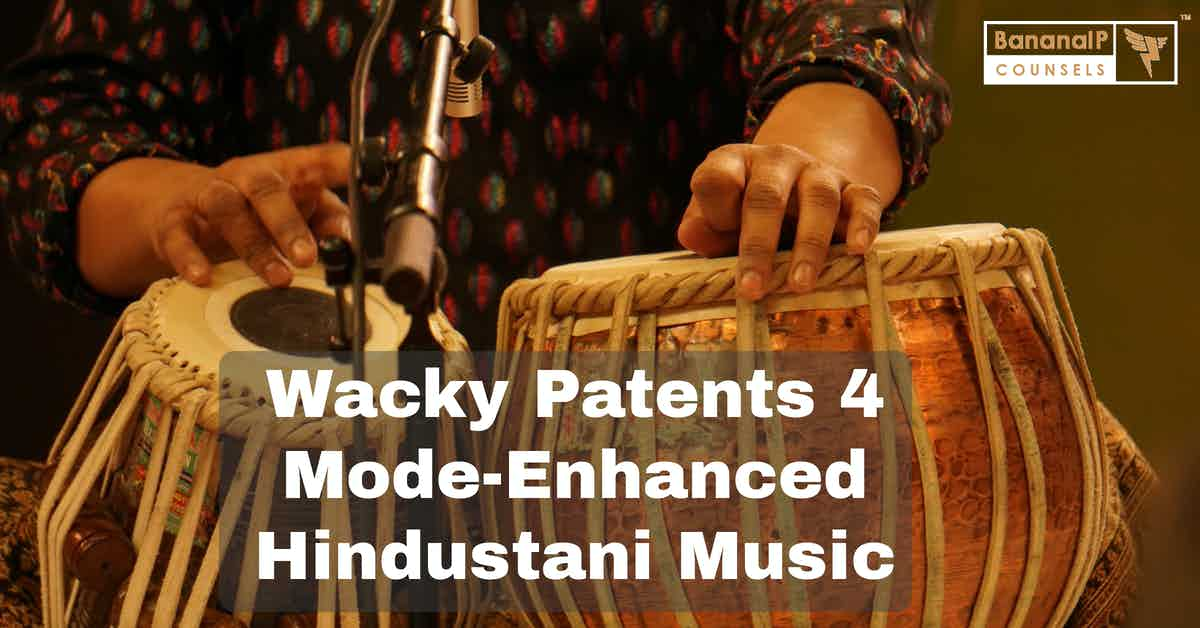This post was first published on 19th December, 2014.
It’s a musical world. From the pitter patter of raindrops to pulsating headaches, there is music everywhere. In many languages, voice modulation and tone become part of communication. Ever wondered if a method of creating music could be patented?
Well, that’s exactly what Wacky Patent 4, Mode enhanced Hindustani Music is about. US Patent Application No. 10/082,777 filed in February, 2002 by two inventors of Indian Origin, Prabhakar Prahlad Jamkhedkar and Prashant Prabhakar Jamkhedkar, was granted Patent No. 6,750,387 in June, 2004. Now, on that note (pun intended), let’s see what this patent is all about!
Music is a combination of Melody and Rhythm. Based on these, music is classified into various forms across the world. In the genre of Hindustani music, one of the two most prevalent forms across India, Melody is referred to as Raag and the Parent Scales (Modes) from which many Raags can be derived, are referred to as Thaat. Pandit Bhatkande was the first to systematize Hindustani music and categorize all the Raags under 10 Thaats based on the notes used.
What the patent application says, is that these 10 Thaats limit Hindustani Music severely and that there is a possibility of 22 more Thaats that could be identified. So far, Raags are created based on melody and whatever sounds right within a given Thaat. The invention says that: “…scientific and mathematical approach to identify and compile new Thaats could be used in Hindustani Music [and] would enhance the state of the art.”
Now, on to the Novel Method – There are 7 notes in music {SA, RE, GA, ma, PA, DHA, NI, SA}. Though there are 7 notes, the eighth note SA is appended to it to complete the tune (Raag). For a Raag to be created, there must be at least 5 notes and a maximum of 7 notes (more, if there are repetitions). So, including the Octaves and the sharp notes, there are 12 notes in Hindustani Music {SA, re, RE, ga, GA, ma, MA, PA, dh, DH, ni, NI}.
Because a Thaat contains 7 notes, it can be seen that one can select 7 out of the 12 notes to result in a possible valid 792 note combinations. Of these, every new Thaat must have the note Sa fixed. Therefore, that gives a selection of 6 out of 11 notes to arrive at 462 note combinations. Now, these 462 note combinations in the 10 Thaats are grouped into 8 groups A-G, each containing 4 Thaats. It turns out that 4 groups have 2 Thaats each, 2 groups have 1 Thaat each and 2 other groups without any known Thaats.
The way to rectify this deficiency is to simply add new Thaats. Keeping SA and PA fixed in every note combination, one can create 22 new Thaats by just selecting notes from the remaining 5 notes. From a total of 32 Thaats, thousands of new Raags could be composed which would enrich the glory of the already rich Music system.
This may sound like mathematical mumbo-jumbo. The truth is that this is a truly scientific approach to analyse and enrich the world of Hindustani Music. But the real question is “Whether anyone can patent the way in which music is created?” This question creates the deafening silence leaving the answer quite wanting. Now, that’s truly a Squeaky Patent!
Source: Here



